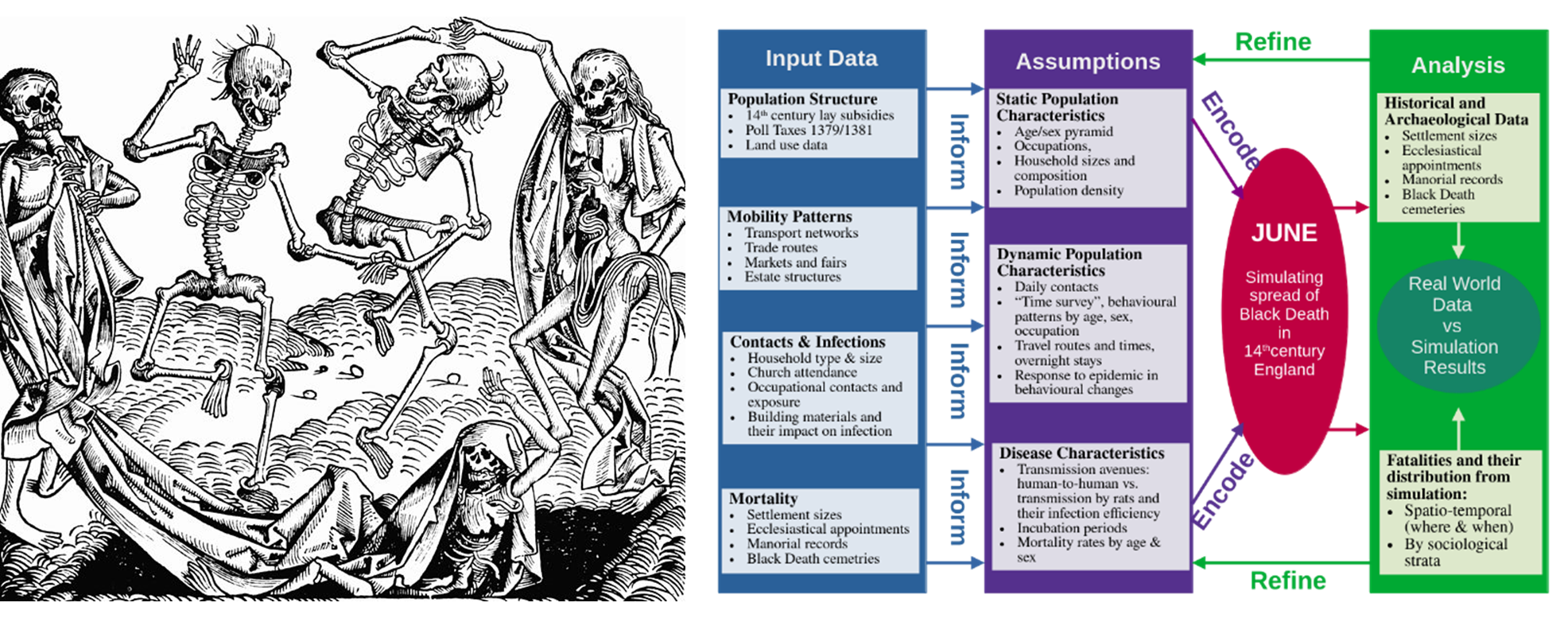Modelling the Black Death and Social Connectivity in Medieval England

Research Project Grant 2024
Dr Alex Brown, Professors Frank Krauss, Christopher Gerrard, and Rebecca Gowland of Durham University have been awarded a Research Project Grant by The Leverhulme Trust for their project on 'Modelling the Black Death and Social Connectivity in Medieval England.'
The Black Death of 1348-9 stands ‘unchallenged as the greatest disaster in documented human history’, yet the characteristics of the disease that killed approximately half the population of Europe in just a handful of years have long confounded academics. Although largely thought to be caused by Yersinia pestis, it is still unclear how the disease spread so quickly in a preindustrial society. We will use the latest computer modelling developed in response to the COVID-19 outbreak to simulate the spread of the Black Death in England. The JUNE model uses modern census data about the population and a range of further information about their daily lives – such as work patterns, travel, and social activities – to simulate the spread of the disease. This is how traditional disease modelling works: with sufficient information about a population and their behaviour, alongside information about the characteristics of a disease, we can project potential future outcomes and so put in place mitigation policies to limit the spread of a disease.
We will invert this logic by using our best knowledge of late medieval society to project plausible pathological pasts and determine the most likely way the disease spread. Using historical and archaeological sources, we will reconstruct the broad characteristics of the late medieval population on the eve of the Black Death, such as their location, age, sex, and occupation. This is the ‘static’ part of our model. We will then infer their ‘dynamic’ behavioural patterns, such as where they spent their time and whom they encountered in their daily lives. Our primary objectives are to establish how the Black Death spread, the likely means of its transmission, and what this reveals about social connections in medieval society. We will be able to model for multiple modes of transmission: one direct, through human-to-human contact, where either infected fleas from carriers are transferred to uninfected people, or where close contact allows transmission through coughing; and one indirect, where infected fleas remain at a place and establish a ‘disease reservoir’.
We hope to shed new light on the disease itself, and the extent to which it was spread by human interactions, as well as the social connectivity of late medieval society by identifying how people likely interacted with one another during one of the worst pandemics in global history.


/prod01/prodbucket01/media/durham-university/departments-/history/77231.jpg)